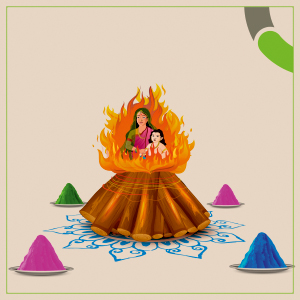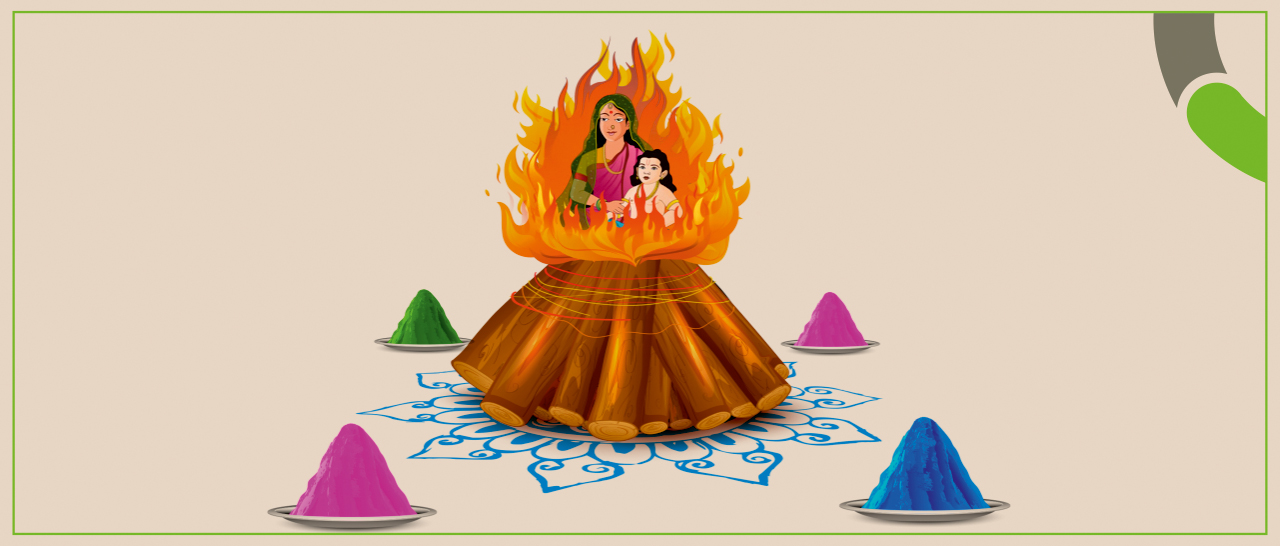Burn evil and let the hues of nature and goodness fill your life this Holi

Every festival and celebration in the Indian culture have great scientific, cultural, and religious significance to it. This is one of the reasons why we have so many legendary tales that allude to the origin of almost every festival. The same is the case even with Holi. While the legend has it that Holi is observed to mark the celebration of the evil Holika being burnt alive, many claim that it is to symbolize the arrival of the colorful season of spring, which is depicted by smearing colors.
The tale of Holi goes something like this. Holika, a demoness, was blessed with the boon of stepping out of fire unhurt, entered the flames with her nephew Prahalada on the orders of her brother and the King Hiranyakashipu. However, Prahalada being a staunch devotee of Lord Vishnu, walks out of the fire unhurt, while Holika is engulfed in the inferno. It was a moment where evil lost a battle to good, and people were all praises for the power of Lord Vishnu who saved the little boy from being hurt, and that joy is reflected by people even today by joining in celebrations.
One thing that remains common in all the legendary tales of Holi is that it is a festival that people come together and celebrate as a community, rather than with just the family which is the case with most other festivals.
“Bura Na Mano Holi Hai,” the commonly used phrase around this festival sums up the essence and spirit of the celebration. It lets people put aside their ill feelings against each other and come together to celebrate and rejoice in harmony. It highlights communal harmony and has people from all walks of life come together sans any
religious, social, or cultural differences.

The traditions of smearing colors on family, friends, and loved ones is believed to be an expression of wishing a colorful life to the person. And traditionally these colors were made out of crushed flowers and herbs that naturally beautifies the skin by penetrating into the body. This beautifying was considered essential as there is a drastic shift in the temperature around Holi from cold to hot. Even the burning of Holika effigy around the country is said to be a way to keep the body warm and protect it from harmful bacteria.
The Holika effigy is built using old clothes, firewood, and cow dung. Circumambulation of people around this fire singing and dancing in praise of the Lord helps them absorb the warmth of the fire. An important observation on the eve of the festival of colors, it prepares people physically and mentally for the dance, music, and celebrations that would follow on the actual day of celebration of Holi, which marks the triumph of good over evil.
In today’s time and age, where we are engulfed in a turmoil of busy schedules and life, this is a great occasion to come together and rejoice with our loved ones. And it is a time we go back to the basics and switch to the organic colors that our ancestors used, which are bound to beautify us, rather than the chemical infused colors that do more harm than good. It is a time we pledge to go back to basics and cherish Indian traditions, values, and goodness.


